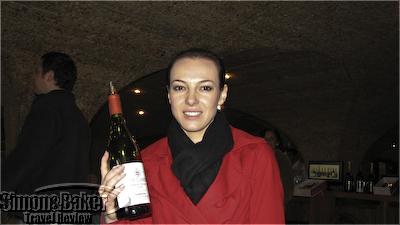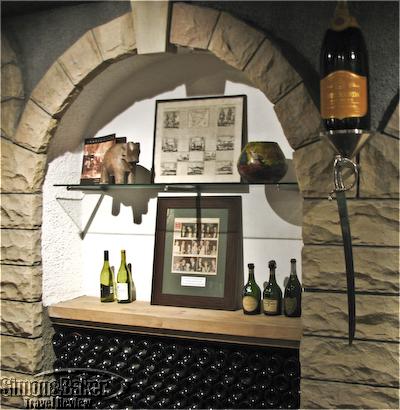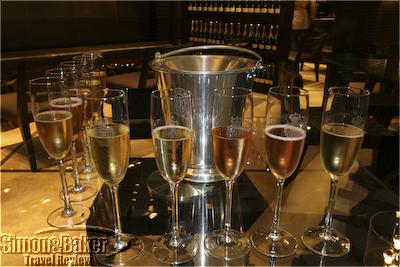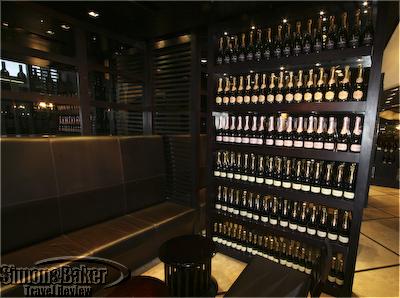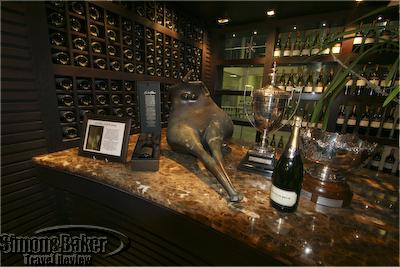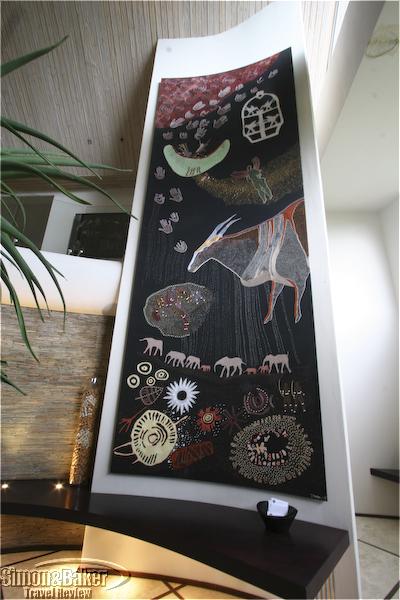by Editor | Dec 14, 2015 | Attractions, Food and Wine, Luxury Travel, Restaurants, Wine
Article and photos by Elena del Valle
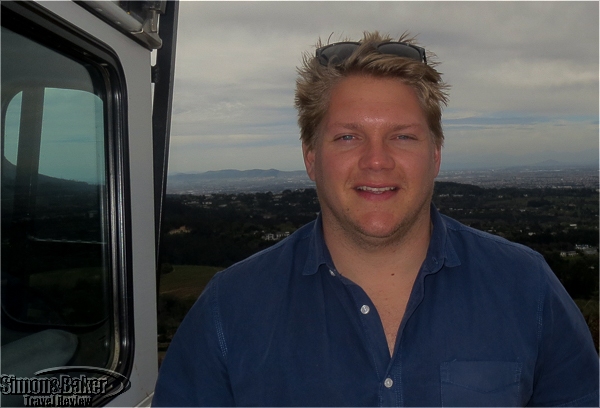
Blake Gowar at the Eagle’s Nest hilltop
During a recent stay in Constantia, a wine producing suburb of Cape Town, South Africa, I went on a 4.5 hour Private Half Day Wine Tour recommended by the owners of the Glen Avon Lodge where I was staying. At 12 noon sharp, Blake Gowar, owner of The Constantia Wine Tour (11 Midhurst Way, Constantia, Cape Town, 7806, South Africa, +27 021 794 4873, +27 082 377 5233, www.theconstantiawinetour.co.za, Blake@theconstantiawinetour.co.za), picked me up at my hotel in his company branded sports utility vehicle.

One of the historic buildings of the Klein Constantia Estate
During the short drive to Klein Constantia (Klein Constantia Estate, PO Box 375, Constantia, 7848, South Africa, +27 021 794 5188, kleinconstantia.com, info@kleinconstantia.com), the first of three wineries on the tour, we had a chance to chat as I was the only guest on the tour the chilly winter day. Blake explained his was the first and only company dedicated exclusively to half and full day tours of Constantia wineries.

Janine Dodds, our friendly host at Klein Constantia
After passing through the security gate we entered the Klein Constantia Estate. Dating to 1685 the property was built among ancient trees on the upper foothills of the Constantiaberg Mountains. It had a view across the city to False Bay. Although it was in the midst of extensive renovations the tasting room was unaffected. Janine Dodds, a well informed and friendly representative, greeted us and recommended wines for me to taste. We were the only visitors at that moment. Thanks to the quiet off season ambiance I had her undivided attention during the wine tasting. The property was best known for its chardonnay and sauvignon blanc wines. It also had the best stocked gift shop I visited on the tour. There were branded cycling shirts and a variety of foodie and wine items on sale.
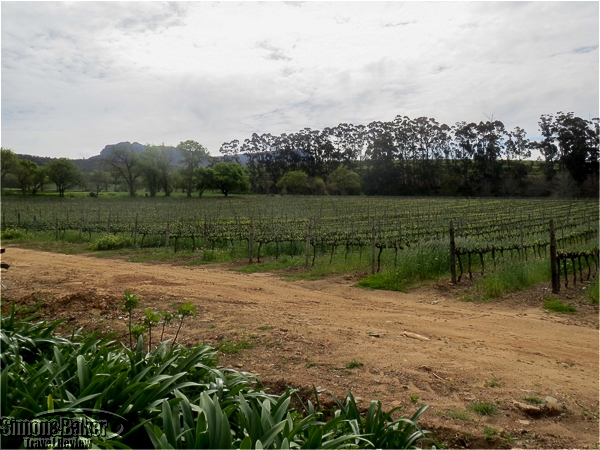
The vineyards at Klein Constantia
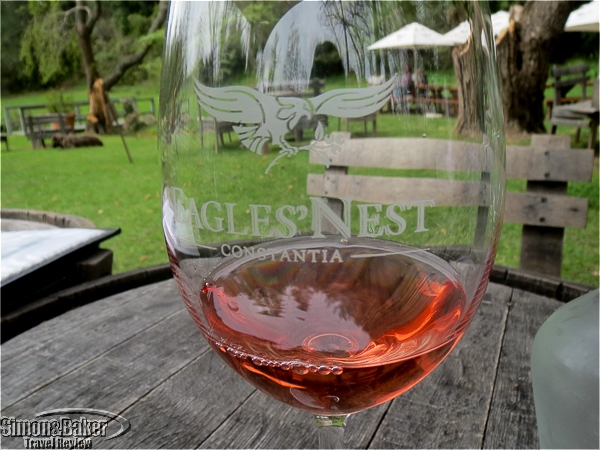
The garden seen through a glass of rose wine at the Eagle’s Nest
A handful of people had arrived before us at the Eagle’s Nest (Old Constantia Main Road, Constantia, 7848, South Africa, +27 21 794 4095, eaglesnestwines.com, info@eaglesnestwines.com, orders@eaglesnestwines.com) where we received a warm welcome from Kaylee Morrick and Kathleen McNulty. There were still left plenty of table choices in the verdant garden. Following the staff’s recommendation I picked a spot where I tasted a rose and couple of the white wines while Blake went to swap his sports utility vehicle for a four wheel drive. Thanks to a family friendship with one of the owners of the Eagle’s Nest Blake had exclusive permission to use the property owner’s Land Rover and drive up the winery’s mountain for tours.
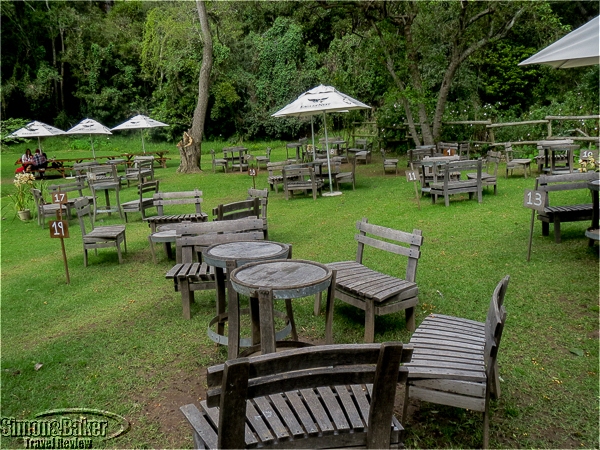
Although it was chilly I was drawn to the lush garden at the Eagle’s Nest
The Eagle’s Nest was in a secluded valley high up on the slopes of the historic Constantia mountain range, part of the Table Mountain area. One of the five small boutique wineries of Constantia it was home to some of the steepest gradient vineyards in the country, Blake explained. The winery was known for its dry rose, viognier and award winning shiraz. The weather worn vehicle climbed the single lane dirt road with the ease of a goat, if slightly less grace. We stopped along the way for some photos and a close up glimpse at flowers.
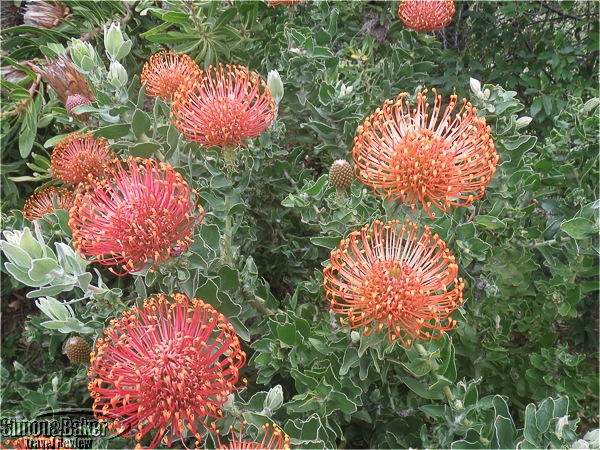
Flowers growing by the side of the road
By the time we reached the high point on the farm the wind had picked up and I was chilled despite my fleece and windbreaker. The panoramic views of the farm, followed by Constantia in the foreground and greater Cape Town beyond reached all the way to the ocean. The breathtaking scenery from the top made the detour worthwhile.
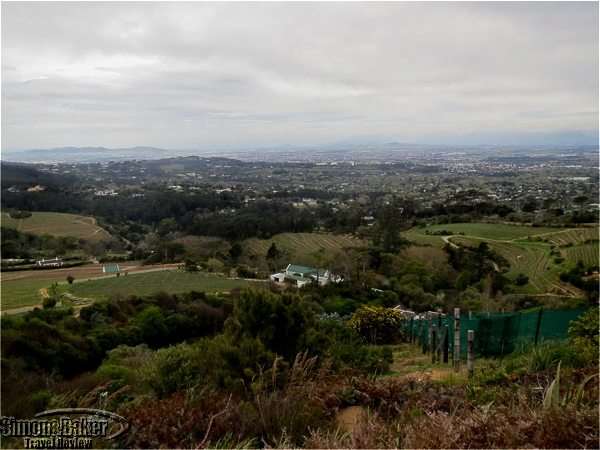
Bird’s eye views of Cape Town from the hilltop at the Eagle’s Nest
On our return to the Eagle’s Nest tasting room, we sat indoors near the crackling flames of the fireplace. The glass walls afforded us a view of the garden during the second half of the wine tasting. I especially enjoyed their three lovely reds.
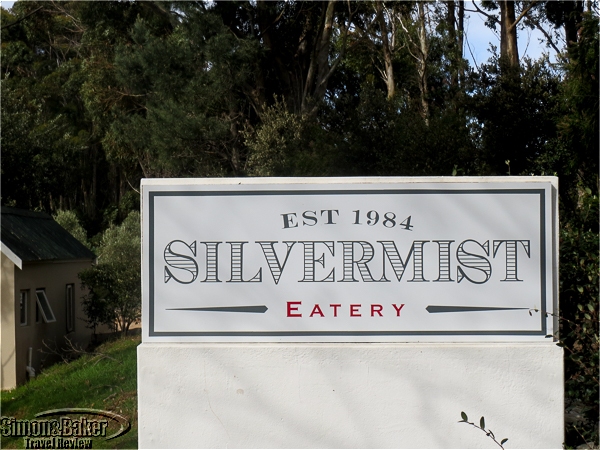
Our third winery was Silvermist
All that wine tasting had made me hungry. By the time we arrived at Silvermist (Constantia Nek, 7806 Cape Town, South Africa, +27 21 794 7601 silvermistmountainlodge.co.za, silvermistvineyards@gmail.com, silvermisteatery@gmail.com), on the forested slopes of Table Mountain and within the Table Mountain National Park, I was ready for a late lunch and a tasting of the farm produced white. The rustic 120 acre estate that borders the Constantia Wine Route was, I was told, the only organic vineyard in Constantia. It was best known for its sauvignon blanc. Candace Louw, one of the owners, welcomed us warmly when we arrived.
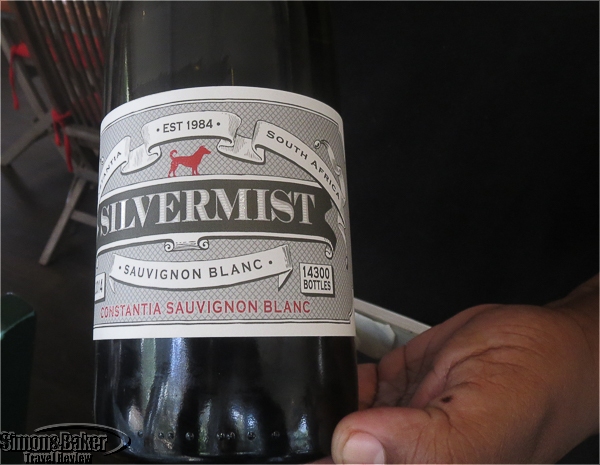
The Silvermist Sauvignon Blanc
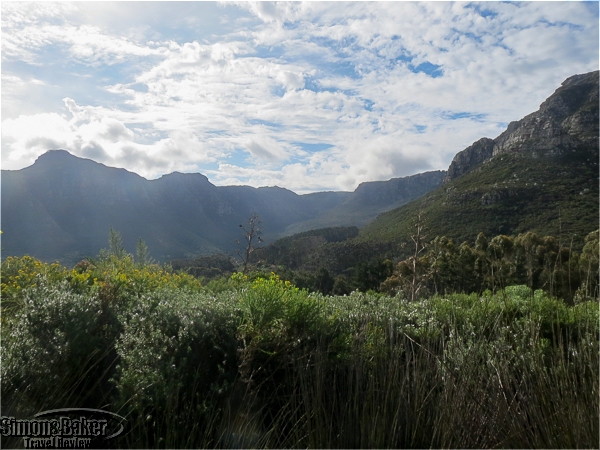
The views of Table Mountain National Park at Silvermist
We ate in the Green Vine Eatery, one of two dining venues within Silvermist, where Blake ordered the special of the day, a tasty pizza, and I had a well prepared hamburger with potato wedges. While we waited for lunch we stepped out briefly to enjoy the beautiful views of the environs and Table Mountain. Dessert of chocolate muffins was to go.
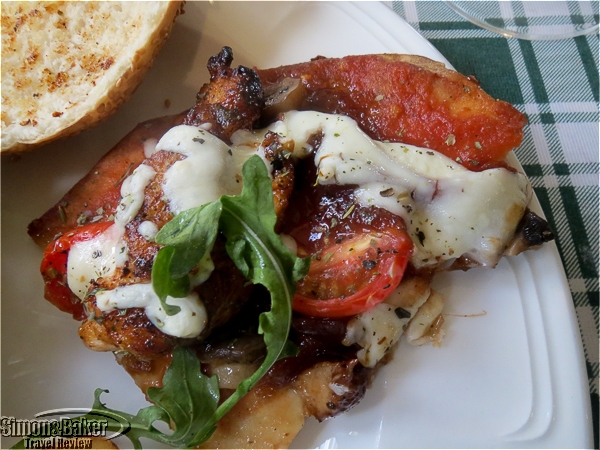
The pizza special for lunch at the Green Vine Eatery
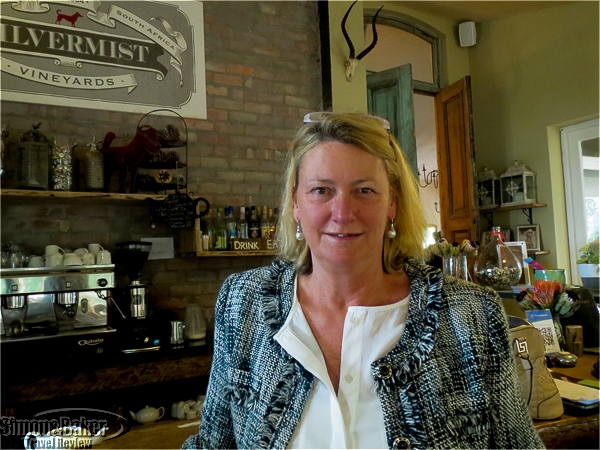
Candace Louw, one of the owners of Silvermist
As my tour guide and I parted company, I realized how much I had enjoyed the pleasant pace of the private half day tour, the wine tastings, lunch, and Blake’s company. Although I had visited Constantia before, I had never been to any of the wineries on our tour that day. I appreciated having someone else drive all afternoon. It meant I could taste as many wines as I wanted without worrying about driving. And, I didn’t have to find the wineries with my rental car’s not always trustworthy GPS directions. Plus, it was fun to discover new estates. Blake’s selection of the wineries was spot on in terms of the setting and the wines themselves. The unique opportunity to climb to the high point of the Eagle’s Nest farm was an unexpected bonus.
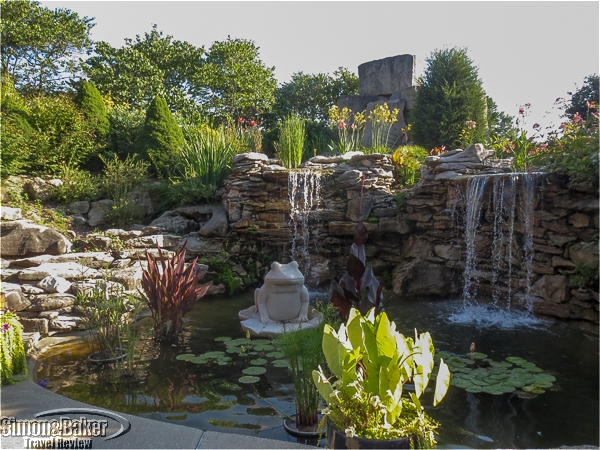
by Editor | Oct 26, 2015 | Attractions, Wine
Article and photos by Elena del Valle
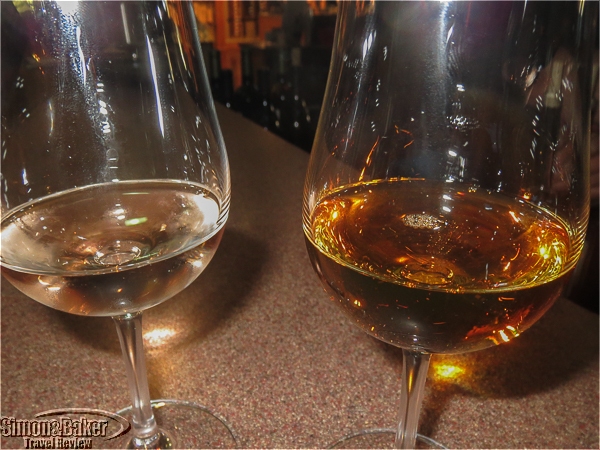
Some of the Oliver wines I sampled

A water feature near the entrance to the tasting room
By the time we reached Oliver Winery and Vineyards (8024 North State Road 27, Bloomington, Indiana, 47404, +1
812-876-5800, www.oliverwinery.com, admin@oliverwinery.com), 10 miles from the heart of Bloomington, Indiana,
the waning sun was way past its zenith, its rays showing off the winery gardens to their best advantage.
To one side of the entrance, I caught a glimpse of a small pond surrounded by green lawns and inviting picnic tables in the cool shade.
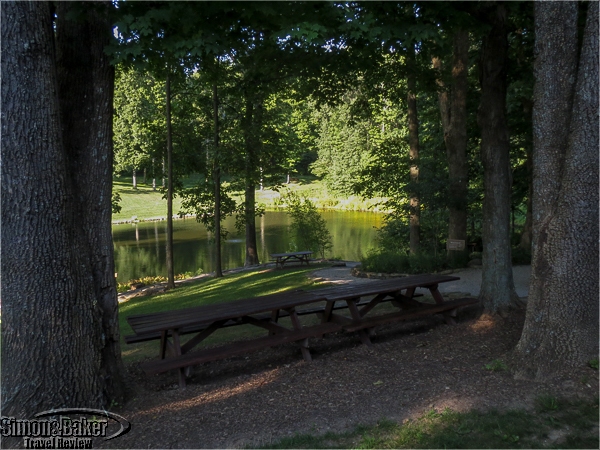
There were many shady spots and picnic tables with a view of the pond
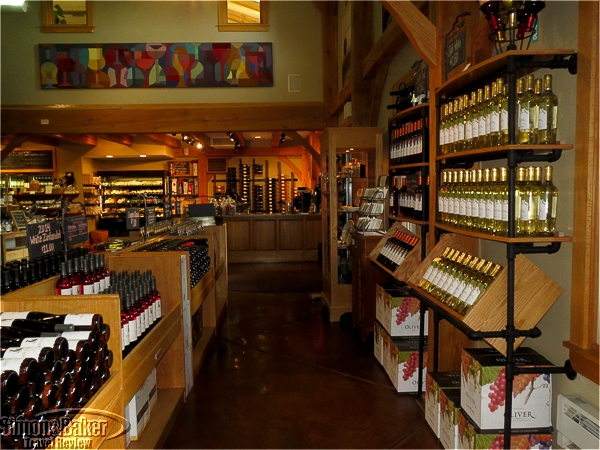
Inside the tasting room there were many displays, chalkboards and art on the walls
As our large group scattered over the outdoor terrace to enjoy the last of the afternoon I made my way indoors to the tasting room. Standing side by side with several colleagues I sampled six wines, some because someone else was sampling them and others I chose. They were: Creekbend Valvin Muscat 2014, Creekbend Vignoles 2014, Creekbend Traminette 2014, Cabernet Sauvignon 2012, Creekbend Catawba Late Harvest 2013, and Creekbend Vidal Blanc Ice Wine 2008. The last two required payment of a supplement beyond the regular tasting menu price. They were the sweetest.
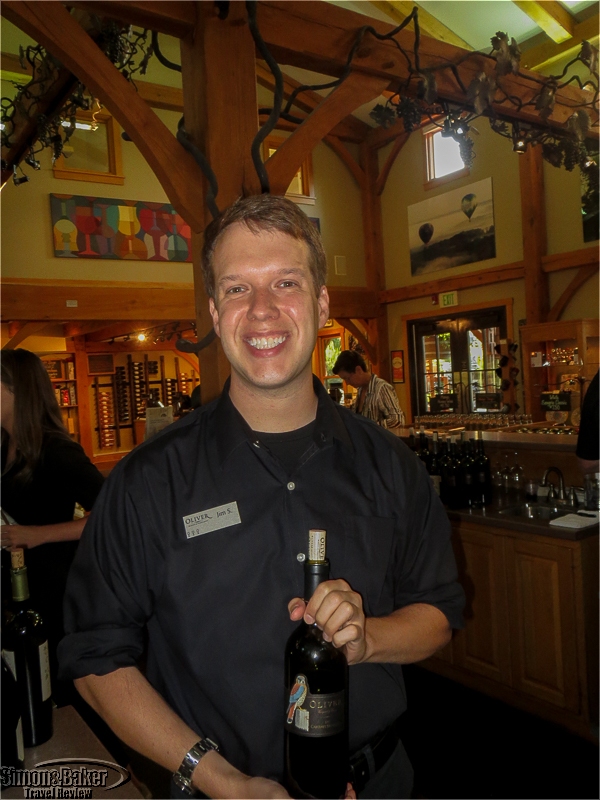
Jim explained how the ice wine was notable because of the winery’s geographic location
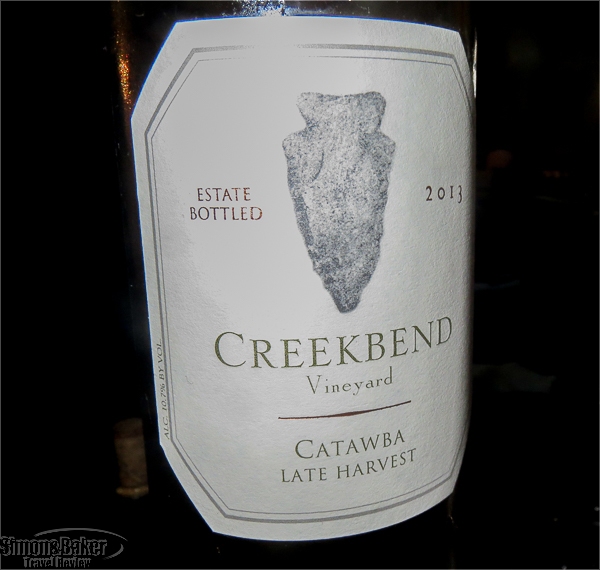
A bottle of 2013 Catawba Late Harvest
I was surprised to discover ice wine, the ultra sweet wine made from grapes allowed to freeze naturally on the vine, on the tasting list. Since most of the ice wine I had heard of or tried in the past in North America was from Michigan, New York, Pennsylvania, Oregon, Washington, or Canada (Germany and Austria too) I decided to sample some of their ice wine. Jim, the staff member who looked after us, was friendly and knowledgeable. He answered questions peppered from all sides with patience and interest. He offered each of us wine samples and shared tidbits about the winery and the vineyard only four miles away. Standing at the cozy tasting bar, chatting with fellow travelers about food and wine it was hard to imagine Oliver Winery employed 100 people and produced more than 320,000 cases or 3.8 million bottles of 40 wine types.
Oliver Winery and Vineyards, one of Indiana’s oldest and largest wineries founded in 1972, was under the stewardship of Bill Oliver, son of the company founder. It had two physical locations, a winery that housed the modern 2,400 square foot tasting room where I sampled several wines and the pretty adjacent gardens and grounds; and Creekbend Vineyard, a 56-acre property where they grew the grapes. The company distributed its products in 18 states and shipped nationwide.
by Editor | Feb 8, 2010 | Wine
By Elena del Valle, photos by Gary Cox
Our host at the Haute Cabriere wine tasting in Franschoek, South Africa
A saber is used in the sabrage at Haute Cabriere
One of the many things I enjoy when we visit South Africa is the local bubbly or as it is known by its proper designation Méthode Cap Classique (MCC) wine, MCC or Cap Classique for short. Although the manufacturing process is similar to French bubbly because these sparkling wines are made in South Africa and not in the Champagne region of France they technically should not be called Champagne.
Following the old saying that “When in Rome… ” when in South Africa I prefer to sample the local wines and premium cap classique wines, which are slowly gaining local and international recognition, whenever possible. I find some of the better MCC wines are an excellent accompaniment to a meal or pleasant as an aperitif.
According to the Cap Classique Producers Association (CCPA), established in 1992 by a group of like-minded producers, South Africa’s major MCC producers are striving to develop high quality standards for the wines made using the classic bottle-fermentation method. Although the name Cap Classique was adopted to remind consumers that the classic art of winemaking was introduced to the region by French Huguenot immigrants, the first bottle-fermented sparkling wine produced in the Cape was called Kaapse Vonkel (Cape Sparkle).
Late last year we took advantage of a trip to South Africa to spend a couple of days in the gourmet village of Franschoek in the wine region where we visited two MCC tasting rooms. Although the tasting room experiences were completely different they were both excellent value for money and a fun way to explore the region. We went to Haute Cabriere, a winery set on a hill in Franschoek, to sample the Pierre Jourdan MCC and to the Graham Beck winery in the outskirts of the village where we indulged in the winery’s MCC tasting.
The staff at our hotel, La Residence, organized a visit to Haute Cabriere and dropped us off at the winery where we visited the cellars and sampled several wines and one Pierre Jourdan MCC (that was the only tasting option that included an MCC tasting nor was it possible to sample other MCC wines by the glass). We chose Graham Beck because we had tasted their bubbly on previous occasions and liked it. As there was a cellar tasting very near where we were staying we took advantage of the opportunity to visit the winery.
While we were at Haute Cabriere we had an opportunity to watch a sabrage, the opening of a bottle of Champagne, or in this case Pierre Jourdan cap classique wine, with a sabre for celebratory or ceremonial reasons. In the sabrage an experienced person slides the saber along the body of the bottle toward the neck. The force of the blade against the lip of the bottle breaks the glass, separating the collar and cork from the neck of the bottle cleanly. Although it was a very busy tasting area staff members were friendly, enthusiastic, helpful and knowledgeable. Even though we were only able to sample one sparkling wine, it was a pleasant tasting and cellar experience.
The property which belonged to Pierre Jourdan, a French Huguenot farmer in the late 1600s, is now made up of two farms and owned by Achim von Arnim. In 1982, the vineyards were replanted in the style of Champagne. Now, the méthode champenoise wines produced there focus on the classic chardonnay and pinot noir cultivars.
Our MCC Tasting wines at Graham Beck in Franschoek
The tasting area at Graham Beck in Franschoek
A few minutes drive outside Franschoek we found the Graham Beck Wines property easily. On our way in we glanced at the beautiful and distinctive Dylan Lewis cheetah sculptures that framed the entrance. Inside, we noticed an emphasis on interior design and art. There was no attendant in the austere reception area the Saturday morning we visited giving us the impression they were closed. We discreetly looked in at the room behind the reception where a guest and barman were speaking. The young man behind the bar glanced at us and continued his conversation without interruption.
We imagined someone would arrive to look after visitors and entertained ourselves by reading the booklets on display, and looking around the lobby and into the tasting room. After a few minutes a young woman appeared. When we asked about an MCC tasting she indicated we should sit down at a table in the pretty lounge area and a few minutes later returned with five half full glasses of sparkling wine for each of us.
The lobby area of the Graham Beck winery in Franschoek
Large art in the Graham Beck lobby
We sampled Brut Rose 2007, Brut Rose Non Vintage (NV), Blanc de Blancs 2005, Brut Non Vintage and Demi-Sec. Out favorite two were the Brut Rose 2007 and the Brut Rose NV which we thought very similar. The Brut Rose 2007 was made of 80 percent pinot noir and 20 percent chardonnay in the company’s Robertson cellars. The pinot noir grapes are planted on decomposed granite in the winery’s coastal Firgrove Vineyards near False Bay. The chardonnay originated in the Robertson vineyards which have soils with a high natural limestone content. The Brut Rose NV was a blend of 58 percent chardonnay and 42 percent pinot noir.
After visiting the cellars we found out Graham Beck Brut NV was served by President Nelson Mandela at his inauguration in 1994 and by President Barack Obama to celebrate his election. Graham Beck, privately owned by Graham and Rhona Beck, owns three farms and two cellars. The company has been producing MCC wines since 1991. What the Graham Beck tasting experience lacked in ambiance and warm welcome it made up for with its elaborately designed tasting area and the quality of the MCC wines we sampled.
Video by Gary Cox




















